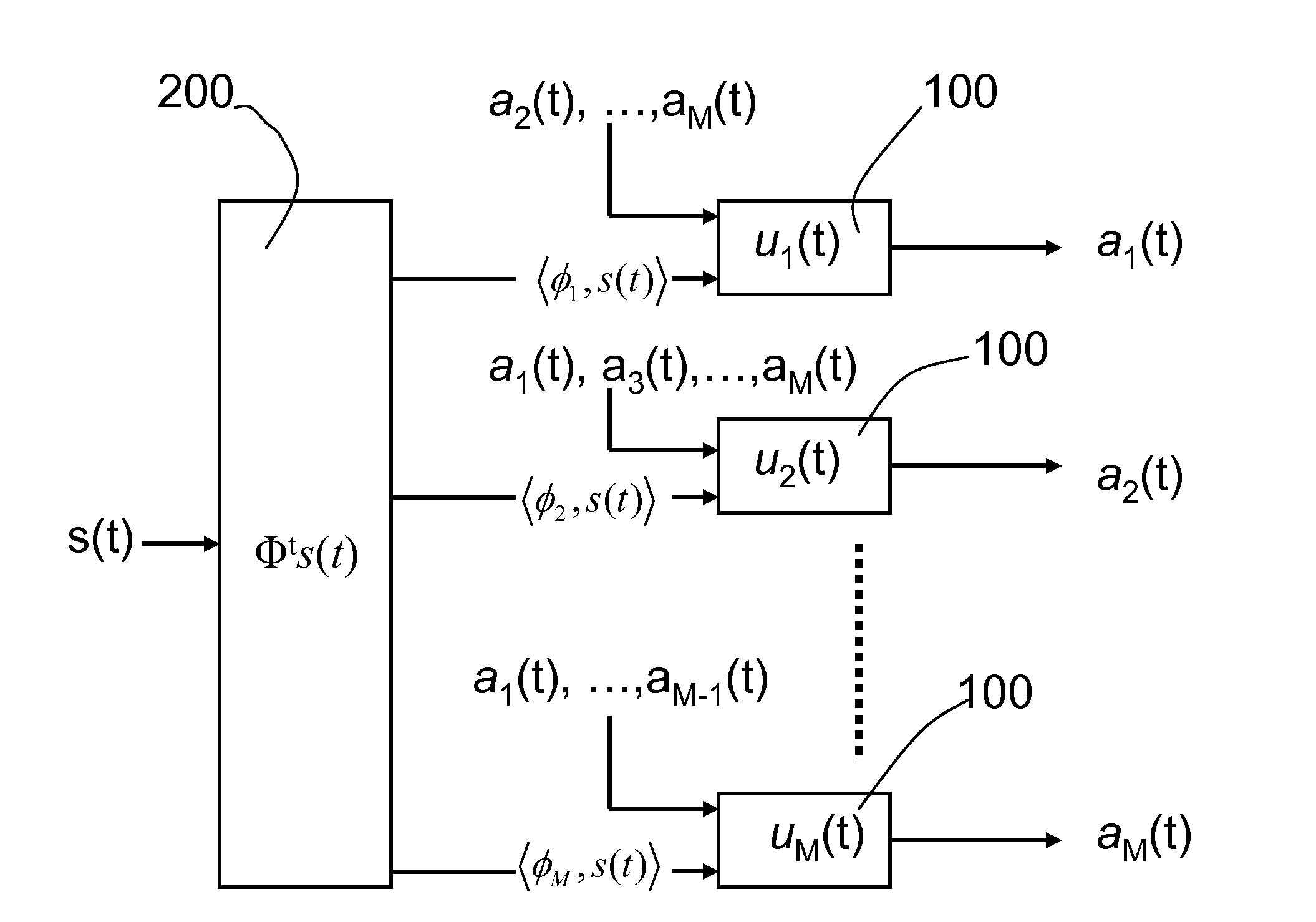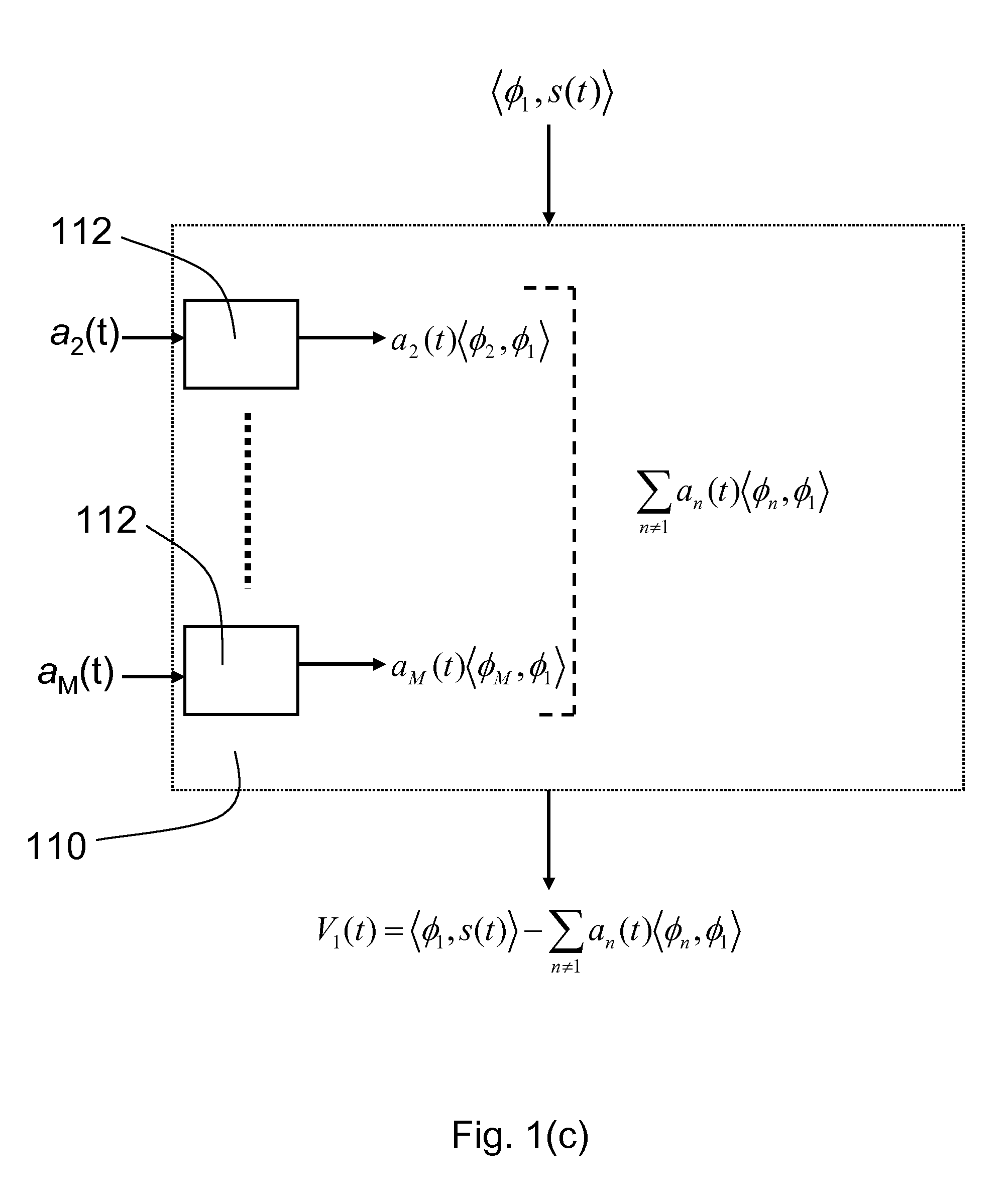Analog system for computing sparse codes
a data and analog system technology, applied in the field of data system for computing sparse representations of data, can solve the problems of affecting the interpretation of stimulus content, affecting so as to improve the quality of stimulus content, improve the sensitivity of stimulus content, and improve the sensitivity
- Summary
- Abstract
- Description
- Claims
- Application Information
AI Technical Summary
Benefits of technology
Problems solved by technology
Method used
Image
Examples
Embodiment Construction
[0045]Digital systems waste time and energy digitizing information that eventually is thrown away during compression. In contrast, the present invention is an analog system that compresses data before digitization, thereby saving time and energy that would have been wasted. More specifically, the present invention is a parallel dynamical system for computing sparse representations of data, i.e., where the data can be fully represented in terms of a small number of non-zero code elements. Such a system could be envisioned to perform data compression before digitization, reversing the resource wasting common in digital systems.
[0046]A technique referred to as compressive sensing permits a signal to be captured directly in a compressed form rather than recording raw samples in the classical sense. With compressive sensing, only about 5-10% of the original number of measurements need to be made from the original analog image to retain a reasonable quality image. In compressive sensing, ...
PUM
 Login to View More
Login to View More Abstract
Description
Claims
Application Information
 Login to View More
Login to View More - R&D
- Intellectual Property
- Life Sciences
- Materials
- Tech Scout
- Unparalleled Data Quality
- Higher Quality Content
- 60% Fewer Hallucinations
Browse by: Latest US Patents, China's latest patents, Technical Efficacy Thesaurus, Application Domain, Technology Topic, Popular Technical Reports.
© 2025 PatSnap. All rights reserved.Legal|Privacy policy|Modern Slavery Act Transparency Statement|Sitemap|About US| Contact US: help@patsnap.com



